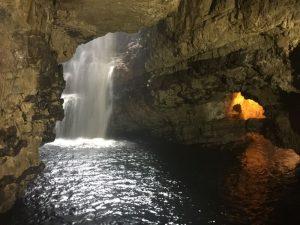“North Coast 500” I hear several times on my train journey north. “North Coast 500” I hear again on my return journey back to Glasgow. It’s a snowy day in January and it seems the whole of Scotland is talking about this epic touring route around the north coast of Scotland.
Referred to as ‘Scotland’s Route 66’ the road trip has firmly established itself as one of the world’s most thrilling road trips with an astounding 29,000 visitors in 2017. Launched in 2015 to promote the wild, mystical and barren landscape of the Northern Highlands of Scotland, the NC500 route has to be Scotland’s best tourist attraction of recent times (excluding of course, Edinburgh’s resoundingly popular International Hogmanay Party).
Not since the romantic movement of the Victorian age, when the gentrified classes swarmed in their thousands to the Trossachs and Royal Deeside for a taste of tamed and cultural Scotland, has Scotland seen such an increase in popularity. Voted in 2017 by Rough Guides as the most beautiful country in the world, the North Coast 500 offers the modern visitor to Scotland easy access to one of the earth’s most striking wildernesses. One has to ask then, as the numbers increase, exactly how long this wilderness will remain wild and untamed?
Spectacular scenery around the NC 500
The scenery will no doubt remain unchanged, as it has for millions of years, but the peace, solitude and uninterrupted views that so many travellers seek, may have to be found out with the main Scottish tourist season which runs from April to the end of October. Already this year, we are seeing an increase in customers looking to hire a campervan and enjoy the North Coast 500 in winter and early spring. Why? For many, it’s the lure of the Northern Lights, otherwise known as the Aurora Borealis, which are more likely to be seen in the winter months. (Applecross, Lochinver and the North West Highlands are excellent places to spot them).
However, for many of our campers, they are simply looking for a taste of adventure and the freedom to explore this stunning part of the world, before the mass of tourists arrive. Whilst Scottish weather conditions at this time of year are variable and temperatures can plummet to as low as -10C, as long as you plan your trip carefully, the North Coast 500 in winter will reward you far more spectacular scenery than you would see touring the NC500 in the summer.
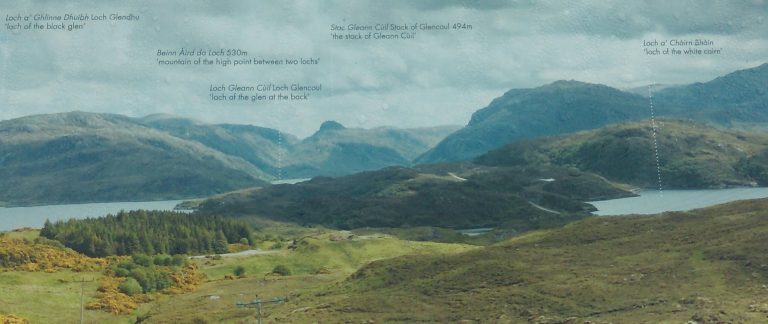
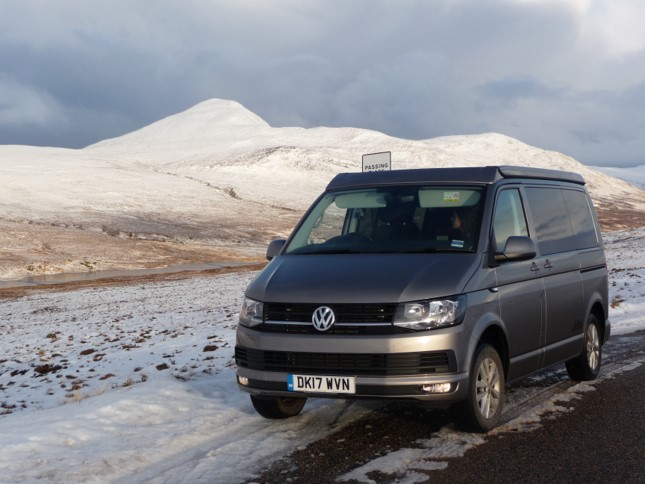
Four Seasons Campers Guide to the NC500 in Winter and early Spring
The official start to the NC500 is Inverness Castle and the 500 mile route takes approximately 5 days. Since the majority of travellers will be starting their tour in the lowland cities of Edinburgh or Glasgow, we suggest adding on a day at the beginning and end of your trip and travelling up the main west coast trunk road, the A82, which sweeps through the imposing and spiritual mountains of Glencoe, on through Fort William, and then runs alongside the Caledonian Canal. The Canal links a series of natural lochs which run between the west and east coasts of Scotland. If you’re into myths and legends, stop and visit the Loch Ness centre on route which is open all year, or simply enjoy a traffic free run to Inverness. We recommend camping at either Cannich Caravan or Camping Park which is west of Loch Ness and less than an hour south of Inverness or Ardtower Caravan Park, which opens at the beginning of March and is next to Culloden. The Camping and Caravan Club Loch Ness Shores by Foyers on east of Loch Ness is also open all year round.
Day 1: Getting to the Gorgeous West Coast
Travel towards the west coast of Scotland, stopping for some delicious lunch, taking in some picturesque coral beaches and weave your way north through Wester Ross.
You can travel round the route clock wise or anti-clock wise but my preference is to get to the gorgeous west coast first by taking the routes most historic pass, the ‘Bealach na Ba’ which is Gaelic for Pass of the Cattle. The road is the third highest in Scotland, and has gradients of 20% with tight hairpin bends leading you to the first destination on the route. Motorhomes are advised to take the longer route via Shieldaig but a VW Campervan is the perfect size to take those thrilling corners…slowly! Stop at the Applecross Inn for seriously delicious seafood or enjoy soup and sandwiches at The Junction. After lunch, travel around the coast to Culdie and take the easy 4 mile path to two sublimely tranquil and picturesque coral beaches that look out to Raasay on the sound of Skye. The next stretch of the journey offer a less white knuckle ride as you weave your way north through Wester Ross past stunning Loch Maree and up through Gairloch. Inverewe Gardens at Poolewe are well worth a visit, even in winter, if day light allows. Then follow the beautiful coast road round to Dundonnel and Badrallach campsite on the shores of Loch Broom.
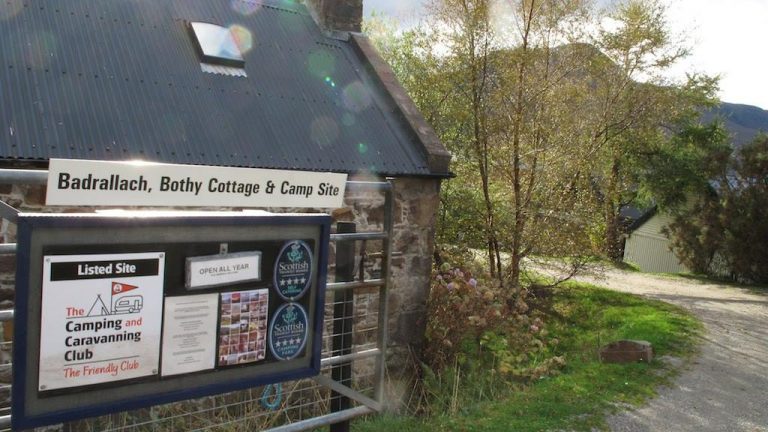
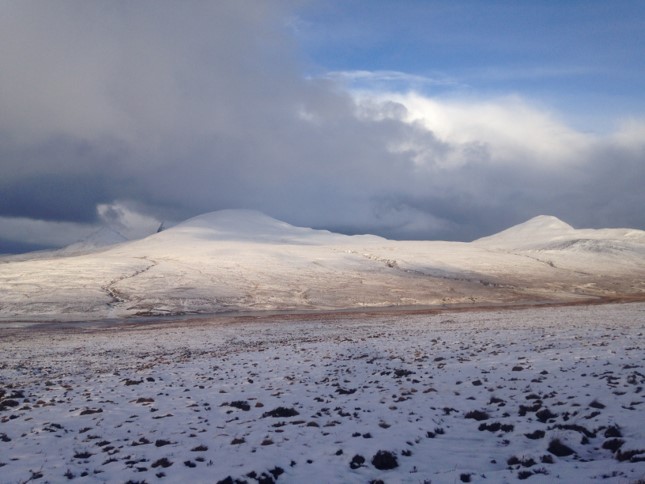
Day 2: Ullapool and Sutherland
Wave goodbye to the world as you know it and enter into what I consider to be the best part of the North Coast 500, the magical kingdom of Assynt!
Day 2 starts along the edge of Little Loch Broom, then up through the busy fishing port of Ullapool. The ferry town has an abundance of lively bars and restaurants and is renowned for its award winning fish and chips. The Ceilidh Place is well worth a visit and offers music events throughout the winter months as well as great food and a book shop. If you’re looking for gifts or keepsakes of your trip, I highly recommend visiting Ullapool’s Highland Stoneware showroom where you can buy beautifully hand painted pottery depicting scenery and animals of the north west highlands of Scotland.
The best section of the North Coast 500 – Assynt
As you leave Ullapool, wave good bye to the world as you know it and enter into what I consider to be the best part of the North Coast 500, the magical kingdom of Assynt! With a landscape of pretty lochans and low rolling hills scattered by Lewisian Gneiss rocks, remnants from the last Ice Age, this area is my favourite part of Scotland. Visited by Geologists throughout the ages, Assynt offers wonderful hill walking and fishing as well as the Bone Caves where archaeologists found human remains dating back to 4500 years ago Take a detour off the route at this point, and head west to the pretty village of Achiltibui and Port a bhaigh campsite which looks out across to the pretty Summer Isles. If you’ve not spent too long in Ullapool, a wee climb up Stac Pollaidh en-route to your next North Coast 500 campsite will burn off the fish and chips! At just over 600m high and taking approximately 3 hours in total to climb, it’s a wonderful mountain to take children up with spectacular views across the lochans and mountains of Sutherland. If you prefer to wild camp and the weather is calm, there’s a exposed parking spot just north of Ardvreck Castle on the A894 which offers spectacular views of Suilven mountain.
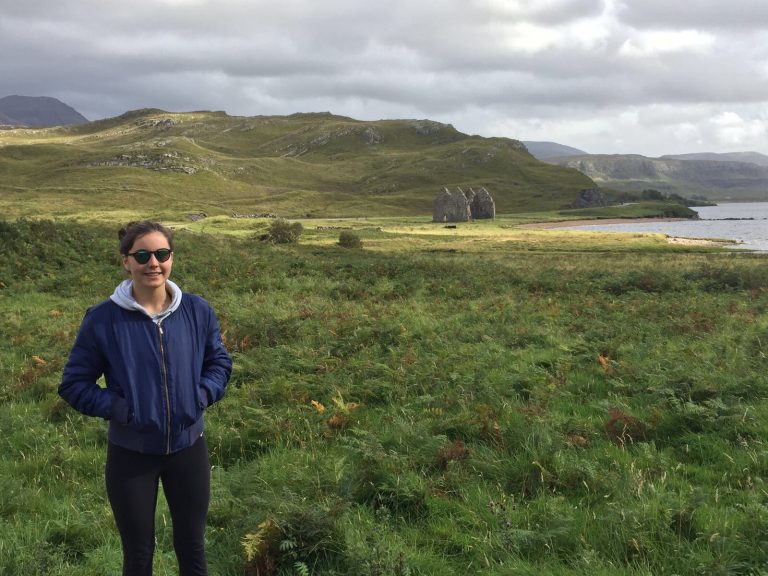
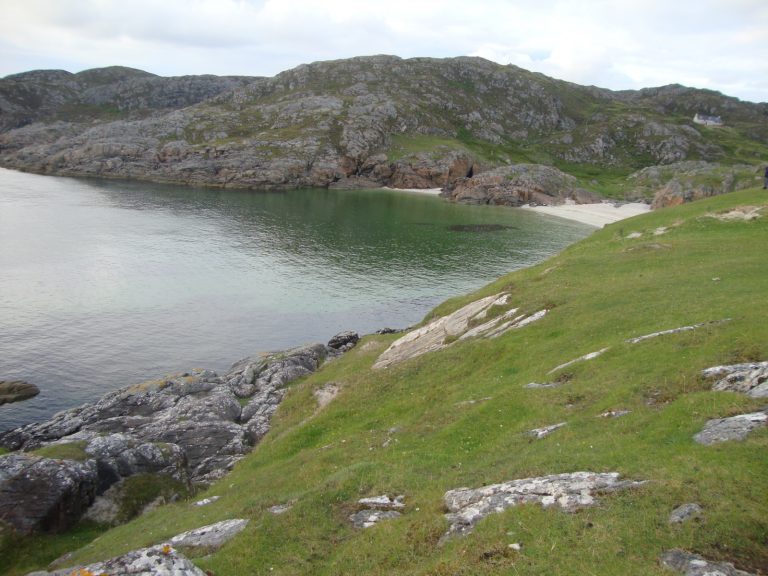
Day 3: Castles and Legends on the North Coast 500
Visit Ardvreck Castle, white beaches of Achmelvic and Clachtoll, taste some of the best pies in Scotland, and stop in at the Smoo Caves.
Make sure you stop at Ardvreck Castle on the shores of Loch Assynt on Day 3 before you head west towards the winding coastline and white North Coast 500 beaches of Achmelvic and Clachtoll. The Castle dates back to 1490 when the Macleods of Assynt owned it and there are information boards sited between the castle and the car park which make interesting reading. Look to the south east of the castle and you’ll spot the ruins of Calda House. The house was built by the newer owners of Ardvreck Castle in the 1700s who, having had enough of their cold draughty castle, decided to build a grand modern house along the shores of Loch Assynt. Unfortunately, they were never to move into it, as amid mounting debts, there were forced to put it up for sale. But the story gets worse….The debts created a power struggle between the Mackenzie Earl of Seaforth and the Earl of Sutherland for control of the whole area of Assynt and in 1736 some Mackenzie supporters deliberately set fire to Calda house to ensure it was never used by the Sutherlands. Continue a few miles west of Loch Assynt, for a choice of over 30 different sweet and savoury pies at Lochinver Larder. Open all year round, these are easily the best pies in Scotland. Walk off the pies afterwards by stopping enroute to Unapool at the stunning white beaches at Achmelvich. Please note that the road around the coast is long and windy so you may want to retrace your footsteps along Loch Assynt for the wider road north, especially in wintery conditions.
The best driving route in Scotland
For those who love driving, the next part of the route will be the highlight of your road trip as you power around the wide sweeping highway through the northern part of Sutherland. Starting with the wonderful curve of the award winning Kylesku Bridge, the road continues north to Durness, loved by Beatle John Lennon who was apparently inspired to write ‘In My Life,’ there. There is a memorial garden in his memory located in the town. A visit to the Smoo Caves is a must on any visit to Durness. Closed for tours in the winter months, you can still enjoy the walkway into the waterfall chamber and the best news is, it’s absolutely free! After a bracing cliff walk or a visit to the caves, you’ll be in need of a heat up at this time of year and the warm and welcoming ‘Cocoa Mountain’ serves the best ever hot chocolate on a cold winters day. Open from 11am till 3pm in the winter until the end of February, they have an amazing choice of fine artisan truffles and chocolates. Choose from their shops at Balnakeil Craft Village overlooking Loch Croispol or the Durness shop. Perched on the cliffs, Sango Sands campsite offers off- season bookings from 10th November to mid- March for £9 a night supplying power and water for campervan tourers. An alternative option is to wild camp in your campervan along the coast in the sheltered car park near Ceannabeinne beach which has spectacular views across to the island of Eilean Hoan. The historic harbour of Rispond is a short walk over the hill from the beach.
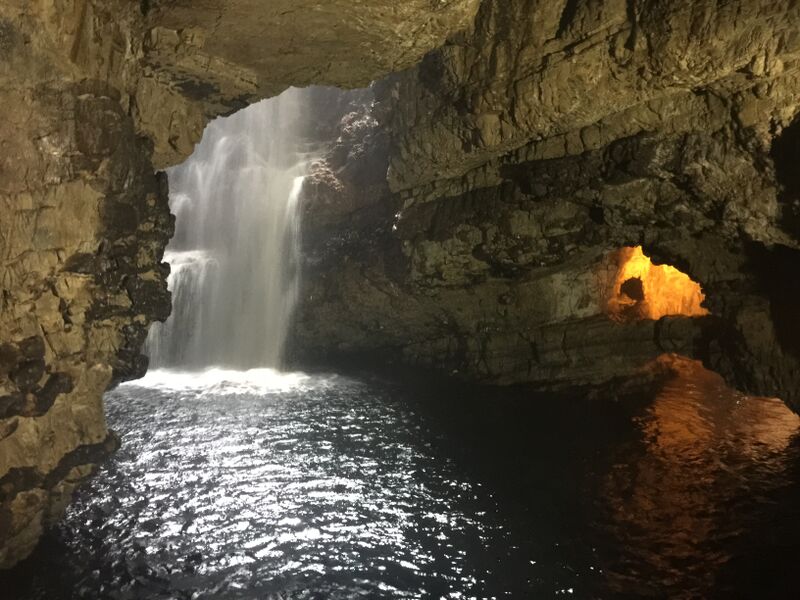
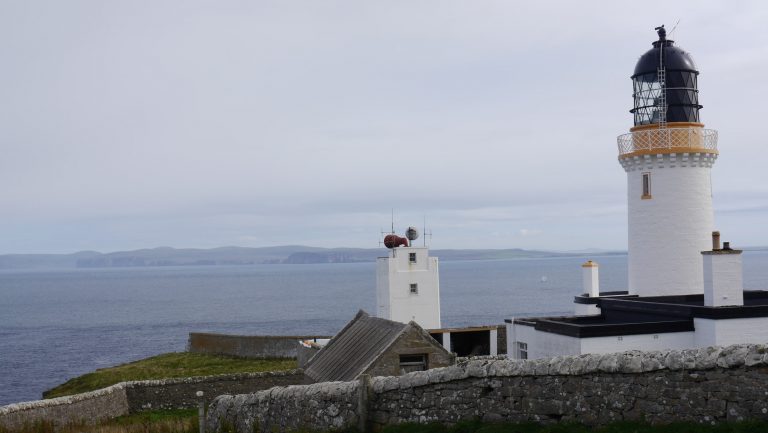
Day 4: The North Coast leg of the North Coast 500
The North Coast leg takes in some stunning cliffs, a visit to the Whaligoe Steps and a lovely Archaeological Trail across moorlands.
Day 4 of the road trip heads all the way around the north and east coastline of the North Coast 500 and takes in the most miles. Don’t worry; the roads are good so it doesn’t take a long as you might think. A few miles east of Durness, Ben Hope (927m) is Scotland’s most northerly Munro mountain and is a relatively short but steep climb with spectacular views of the north coast of Scotland. If you’d rather an easier walk then continue along the coast to Caisteal Bharraich, a ruined tower house overlooking the Kyle of Tongue. It’s a great short walk (approximately 1 hour) but still delivers on some magnificent scenery! The next leg of the NC500 offers still more breath-taking scenery. The road runs parallel with the cliff tops along the Pentland Firth and as you pass through Thurso, Orkney comes into focus. Dunnet Head (10 miles north east of Thurso, and the most northerly point of mainland Britain) is worth a stop for a wander around the RSPB nature reserve. Alternatively, continue on through John O’Groats to Duncansby Head where you can walk around the back of the lighthouse and discover the Geo of Sclaites, a huge cleft which cuts into the cliffs. Admire the stunning view of the Duncansby Stacks, a group of incredible large jagged seas stacks and if visiting in October, look down at the pebble beach below to view the seal pubs…it’s an incredible sight! The Stacks Coffee House and Bistro in John O’Groats is a great stop for lunch with fabulous coffee, cakes, soups and healthy homemade mains and will set you up for the drive south down towards Wick.
Art and Archaeological Trails in Wick on NC500
Perched on the rugged cliffs just north of Wick is Haven House Art where you can view original Scottish Art by Lisa Weller who draws her inspiration from the landscape and nature around Wick. Her studio is open by appointment from January to March or her work can be viewed in The Gallery at John O’Groats from April to December. Also not to be missed are the Whaligoe Steps, a steep footpath down 300 steps to the pretty harbour in Wick which was once the landing place for the herring fishing boats. The herring are long gone but the seabirds wheeling above the imposing cliffs that tower above provide a fascinating display and it’s well worth the effort of the climb back up! If it all sounds a bit too strenuous the Yarrows Archaeological Trail just south of Wick provide a 1.5 hour walk across moorlands rich in archaeological remains including bronze-age chambered cairns and an iron-age broch. After a long day, Inver Caravan Park in Dunbeath provide a small Caravan and Camping campsite just off the A9 to park up for the night.
Day 5: Whisky and Wildlife on the North Coast 500 route
And so to Day 5, the final day of your North Coast 500 road trip adventure. Dornoch, a pretty town down the coast from Wick, provides a number of interesting gift shops including The Carnegie Whisky Cellars where the very knowledgeable manager will talk you through their amazing range of whiskies. If you’ve more time to spare, Glenmorangie Distillery just south of the Dornoch Firth provides excellent whisky tours and from November to the end of March provide 2 tours, 10am and 2pm , Monday to Friday. Even if you’re not a whisky drinker, the tours provide a fascinating insight into the industry and I highly recommend them. As you drive south down the A9 the landscape turns from wilderness to farming but a spectacular view still awaits as you take a detour off the route into an area known as the Black Isle. Set between the Cromarty Firth, the Beauly Firth and the Moray Firth, the Black Isle is not an island but in fact a peninsula. Travel towards Rosemarkie and on to Chanonry Point where there’s a high chance you’ll see Dolphins. Walk along the beach from the car park to the main viewing area on a shingle beach behind the lighthouse. After a mesmerising display and lots of photos, head back to Rosemarkie Beach Café for a heat up and good home-cooked food with excellent cakes and snacks before heading back to Inverness and the final highlight of your North Coast 500 tour. Culloden Battlefield and visitor centre which opens 10 till 4pm in November, December, February and March is run by the National Trust and offers an excellent interactive exhibition. The site of one of Britain’s most important battles between England and Scotland, an atmospheric walk across the battlefield can’t fail to stir the emotions.
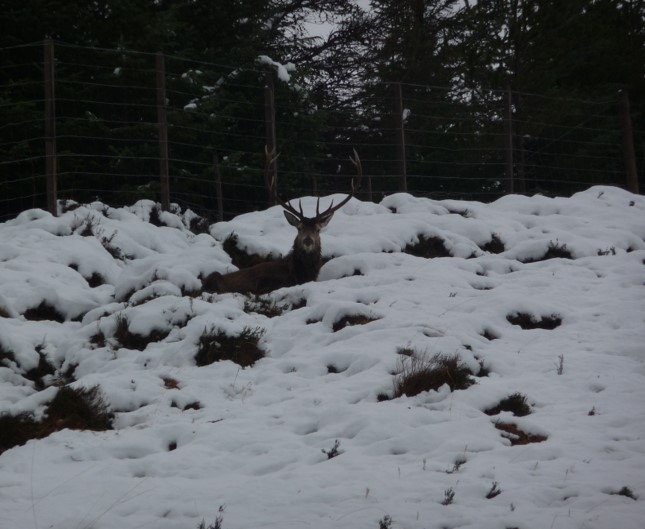

Should you tour the North Coast 500 in the winter and early spring?
Undoubtedly, the answer is ‘yes!’ Touring the NC 500 out of seasons offers you a taste of true wilderness with empty golden white beaches stretching for miles along the west coast (we forgot to mention Sandwood Bay); mile upon mile of dramatic cliff tops (we also should have mentioned the cliffs and lighthouse at Stoer); breath-taking snow-capped mountains; dazzling crystal clear star-lit evenings; magnificent white tipped waves crashing along the shoreline; and you might even be fortunate enough to see the spectacular Northern Lights. In fact, I’d go as far as to say that winter is the ONLY time to take a road trip around the North Coast 500!


